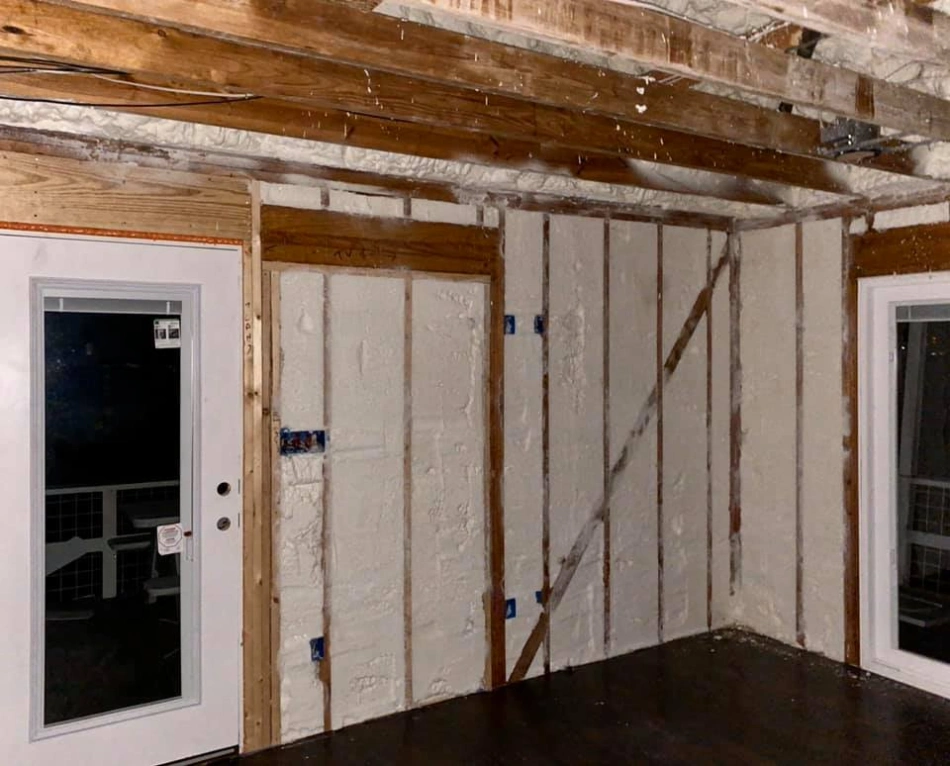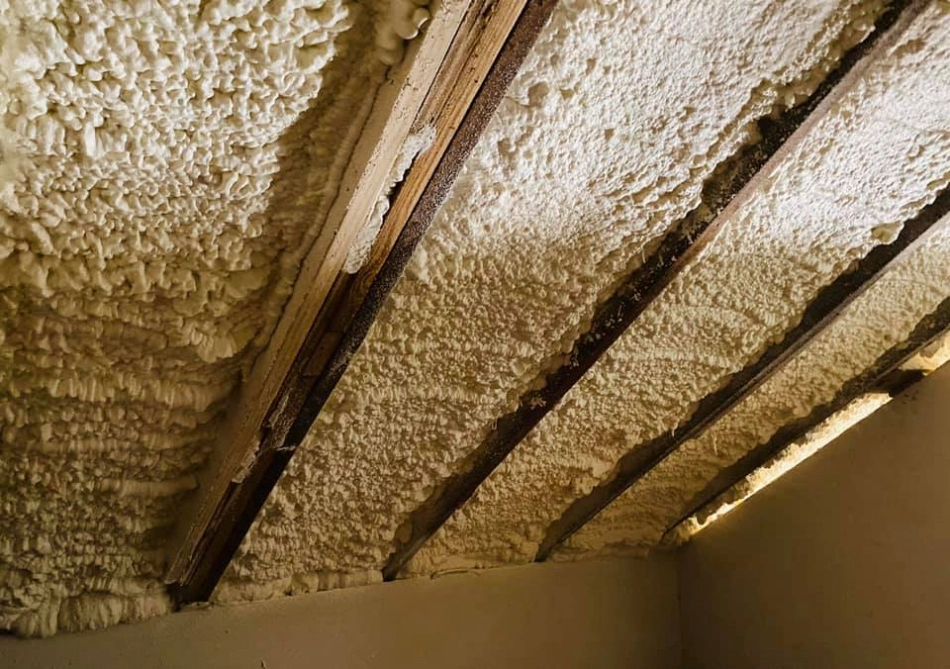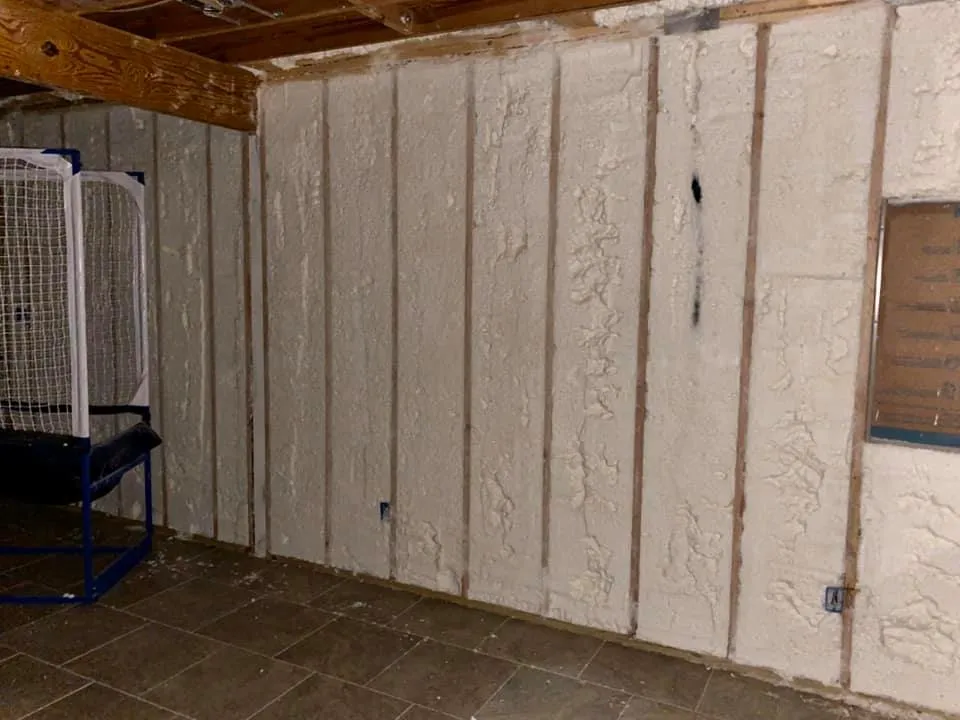Spray foam insulation significantly reduces noise transmission in busy Selma neighborhoods by creating an airtight barrier that blocks sound waves from entering and exiting residential spaces. This dense cellular structure absorbs and dampens acoustic vibrations more effectively than traditional insulation materials, delivering measurable decibel reductions of 15-20 dB for common household noise sources.
The effectiveness stems from spray foam’s unique ability to seal every gap, crack, and crevice where sound typically penetrates. Unlike fiberglass batts or blown-in cellulose that leave air pockets, spray foam expands to fill irregular spaces completely, eliminating sound bridges that compromise acoustic performance. Stellrr’s extensive experience installing acoustic insulation in residential properties demonstrates that properly applied spray foam creates superior sound barriers compared to conventional insulation methods.
Understanding Sound Transmission in Residential Buildings
Sound travels through buildings via two primary pathways: airborne transmission and structural vibration. Airborne sounds include traffic noise, barking dogs, and neighbor conversations that pass through windows, doors, and wall assemblies. Structural sounds involve vibrations transmitted through building materials themselves, such as footsteps on floors above or machinery vibrations through shared walls.
Traditional insulation materials address only basic thermal concerns, leaving significant gaps where sound easily penetrates. Research from the Acoustical Society of America shows that even small air leaks can reduce wall assembly sound ratings by 50% or more. Spray foam eliminates these vulnerabilities by adhering directly to all surfaces and expanding into microscopic openings.
Bonus Tip: Target the rim joist area in basements and crawlspaces first, as this location typically has the most air leaks and provides maximum acoustic improvement per square foot treated.
Spray Foam Types and Acoustic Performance
| Foam Type | Density (lbs/ft³) | Sound Reduction Rating | Best Applications |
|---|---|---|---|
| Open Cell | 0.4-0.5 | 15-18 dB reduction | Interior walls, attics |
| Closed Cell | 1.8-2.0 | 18-22 dB reduction | Exterior walls, basements |
| High-Density Closed Cell | 2.5-3.0 | 20-25 dB reduction | Party walls, mechanical rooms |
Open cell spray foam offers excellent sound absorption due to its interconnected cellular structure that traps sound waves. The material’s flexibility allows it to maintain acoustic sealing even as building components expand and contract with temperature changes. Closed cell foam provides superior sound blocking through its rigid, impermeable structure that reflects rather than absorbs sound energy.
Climate considerations in Selma affect foam selection significantly. The region’s high humidity levels make closed cell foam preferable for exterior applications, as it prevents moisture infiltration that could compromise both thermal and acoustic performance over time.
Technical Specifications for Noise Control
| Property | Open Cell Foam | Closed Cell Foam | Traditional Fiberglass |
|---|---|---|---|
| Noise Reduction Coefficient (NRC) | 0.70 | 0.65 | 0.85 |
| Sound Transmission Class (STC) | 37-42 | 45-52 | 32-36 |
| Air Permeability (L/s·m²) | 2.4 | 0.02 | 8.5 |
| R-Value per inch | 3.6 | 6.2 | 3.1 |
The Sound Transmission Class rating measures how well building assemblies block airborne sound transmission. Higher STC ratings indicate better noise reduction performance. According to data from the National Institute of Standards and Technology, spray foam consistently outperforms traditional insulation in real-world acoustic testing scenarios.
Bonus Tip: Focus installation efforts on shared walls with neighbors, as these surfaces typically show the most dramatic improvement in noise reduction once properly sealed with spray foam.
Installation Strategies for Maximum Noise Reduction
Professional installation requires specific techniques to maximize acoustic benefits. The foam must achieve complete contact with all surfaces, including irregular framing members, electrical boxes, and plumbing penetrations. Incomplete coverage leaves sound transmission paths that compromise overall performance.
Temperature and humidity control during installation affects final acoustic properties. Optimal application occurs when ambient temperatures range between 65-85°F with relative humidity below 80%. Selma’s subtropical climate often requires timing installations during specific weather windows to ensure proper foam expansion and curing.
Thickness requirements vary by application, but acoustic performance improves significantly with proper depth. Exterior walls benefit from 3-4 inches of closed cell foam, while interior partition walls need 2-3 inches of open cell material for optimal sound control without excessive material costs.
Things to Consider Before Installation
Several factors influence spray foam’s acoustic effectiveness in residential applications. Building age affects installation complexity, as older homes often have irregular framing and multiple air leak sources requiring additional preparation work. Newer construction typically provides more predictable installation conditions but may still have acoustic weak points around windows and doors.
Existing HVAC systems require evaluation before foam installation. Sealing air leaks improves acoustic performance but may create indoor air quality concerns if ventilation systems cannot handle reduced natural air exchange. Professional assessment ensures adequate fresh air circulation after acoustic improvements.
Occupant sensitivity levels vary significantly between households. Some residents notice substantial improvement with modest sound reduction, while others require more extensive acoustic treatments. Understanding specific noise sources and tolerance levels helps prioritize installation areas for maximum perceived benefit.
Climate-specific considerations include vapor barrier requirements and moisture management strategies. Selma’s humid conditions necessitate careful attention to condensation control when installing spray foam in exterior wall assemblies. Improper moisture management can compromise both acoustic and structural performance over time.

Stellrr’s Professional Insulation Services
Stellrr specializes in comprehensive acoustic insulation solutions that address noise control challenges in residential properties. The company’s residential spray foam insulation service combines advanced application techniques with material selection optimized for Selma’s climate conditions.
- Closed Cell Insulation: High-performance foam application for exterior walls and basements where maximum sound blocking and moisture control are priorities
- Open Cell Insulation: Interior wall treatment that balances acoustic performance with breathability for optimal indoor air quality
- Attic Insulation: Complete air sealing and thermal barrier installation that significantly reduces noise transmission from roof-mounted equipment and external sources
- Crawlspace Insulation: Foundation-level acoustic treatment that eliminates sound transmission through floor assemblies and reduces mechanical noise infiltration
Common Questions About Spray Foam Noise Reduction
Will spray foam insulation improve indoor living conditions?
Home buyers often ask whether spray foam installation will noticeably improve their living environment quality. The answer depends on existing noise sources and current insulation conditions, but most properties show measurable improvement within days of completion.
Does spray foam insulation require ongoing maintenance?
Maintenance requirements remain minimal after proper installation. Unlike fiberglass insulation that can settle and lose effectiveness, spray foam maintains its acoustic properties indefinitely when protected from direct sunlight and physical damage.
How long does spray foam installation take in Selma?
Installation timeline varies with project scope, but typical residential applications complete within 1–2 days. Weather delays may extend scheduling in Selma’s humid climate, particularly during summer months when afternoon thunderstorms are common.
Bonus Tip: Plan installations during cooler months when humidity levels are lower and weather patterns are more predictable, ensuring optimal curing conditions and faster project completion.
Professional Assessment and Implementation
Effective noise reduction requires systematic evaluation of all potential sound transmission paths. Professional assessment identifies priority areas where spray foam provides maximum acoustic benefit relative to investment. This approach ensures resources focus on improvements that deliver noticeable quality-of-life enhancements.
Building envelope testing using blower door equipment quantifies air leakage rates before and after foam installation. These measurements provide objective data demonstrating acoustic improvements and help identify any remaining weak points requiring additional attention.
Long-term performance monitoring shows spray foam maintains consistent acoustic properties without degradation over time. Unlike mechanical sound control systems requiring ongoing maintenance, properly installed foam provides permanent noise reduction benefits that increase property value and occupant satisfaction.
Getting Started with Acoustic Improvements
Addressing noise concerns in busy Selma neighborhoods requires professional expertise and quality materials to achieve lasting results. Property owners should evaluate their specific noise sources, building characteristics, and comfort expectations before proceeding with insulation upgrades.
Contact Stellrr at info@stellrr.com or (512) 710-2839 to schedule a comprehensive acoustic assessment of your residential property. The company’s experienced technicians provide detailed recommendations based on building-specific conditions and noise reduction goals, ensuring optimal results from spray foam insulation investments.
Answers to Key Acoustic Insulation Questions
How much noise reduction can homeowners expect from spray foam installation?
Properly installed spray foam typically reduces noise transmission by 15-25 decibels, which represents a 50-75% decrease in perceived sound levels. The exact reduction depends on existing building construction, foam type selection, and installation thoroughness. Most residents notice significant improvement in sleep quality and overall home comfort within the first week after installation.
Does spray foam work better than soundproofing panels for residential noise control?
Spray foam provides superior performance for most residential applications because it addresses the root cause of noise transmission—air leaks and gaps in the building envelope. Soundproofing panels only treat exposed surfaces, leaving transmission paths through wall cavities and structural connections intact. Foam creates comprehensive acoustic barriers that panels cannot match.
What happens to spray foam acoustic performance during extreme weather conditions?
Quality spray foam maintains consistent acoustic properties across Selma’s temperature and humidity ranges. The material’s cellular structure remains stable during thermal expansion and contraction cycles, preserving sound-blocking effectiveness year-round. Proper installation techniques ensure long-term performance regardless of seasonal weather variations.
Can spray foam installation affect existing HVAC system performance?
Spray foam installation improves HVAC efficiency by eliminating air leaks that force systems to work harder maintaining comfort levels. However, reduced natural ventilation may require mechanical ventilation upgrades in tightly sealed homes. Professional assessment ensures adequate indoor air quality after acoustic improvements are completed.
How long does spray foam acoustic treatment last in residential applications?
Properly installed spray foam provides permanent acoustic benefits with no performance degradation over time. The material maintains its density and sound-blocking properties indefinitely when protected from physical damage and direct UV exposure. This durability makes spray foam a cost-effective long-term solution for noise control in busy neighborhoods.





